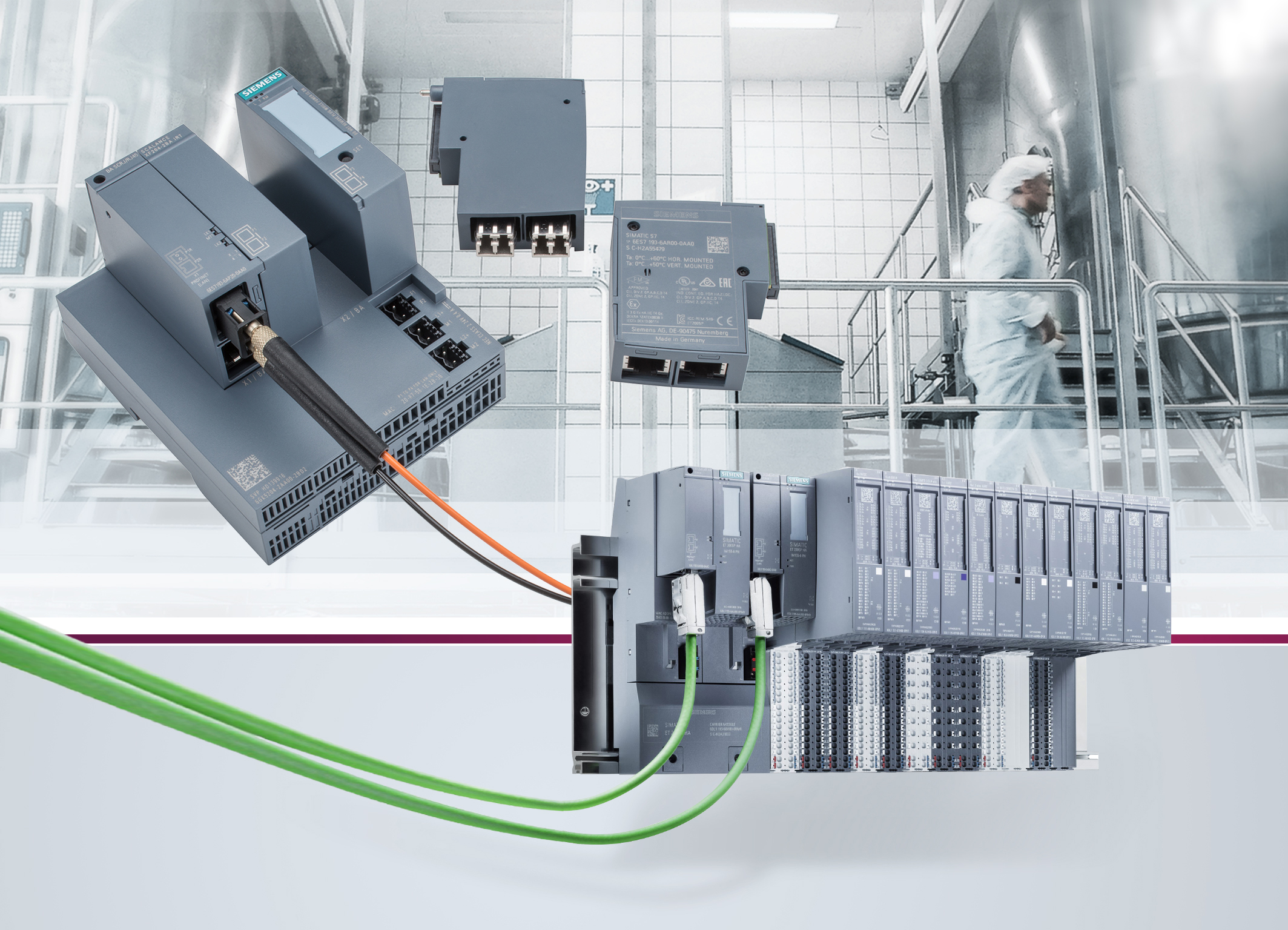Introduction
Any one who has done some commissioning work must have struggled with device accessibility issues. It could be an awkward installation location or a 5 mins navigation through a robot jungle.

The truth is, with SIEMENS systems, you don’t necessarily have to do it the hard way. Throughout my career on many different occasions, I have introduced S7-Routing to my co-workers and in most cases, they love it. Therefore, I’m writing this blog to make my future S7-Routing introduction easier and clearer. Let’s go.
What is S7-Routing?
S7-Routing is a feature of S7 Communication which is a SIEMENS proprietary protocol for its automation devices. S7-Routing behaves similar to the network routing which is the process of selecting a path across one or more networks. The major differences between S7-Routing and the standard network routing are:
- S7-Routing is part of TIA Portal/Step7/Starter, etc so you can access the PLC/Drive/HMI etc.’s online data with the engineering software.
- S7-Routing can work with not only Ethernet but also other communication like PROFIBUS, MPI, etc (as long as you can access the device with the interface, S7-Routing can allow you to do the same remotely).
- S7-Routing can live with other routing so you can use it via a VPN.
- S7-Routing is based on the hardware so your devices don’t have to be in run mode.
How to Use S7-Routing
Example Project Overview
So below is an example about how to use S7-Routing. In this example, there are 3 S7-1515-2 PN PLCs and an engineer’s laptop. The network structure is shown below.

Detailed connection, IP addresses and subnet connections are listed below.
| Engineer Laptop | PLC Node1 | PLC Node2 | PLC Node3 | |
|---|---|---|---|---|
| IP Address X1 | 192.168.68.110 | 192.168.100.10 | 192.168.101.10 | 192.168.102.10 |
| IP Address x2 | - | 192.168.68.109 | 192.168.100.11 | 192.168.101.11 |
| Subnet X1 | AccessNetworkNode1 | RoutingNetwork1 | RoutingNetwork2 | - |
| Subnet X2 | - | AccessNetworkNode1 | RoutingNetwork1 | RoutingNetwork2 |
In general, the engineer laptop is connected to Node1’s X2 port. Node1’s X1 port is connected to a different subnet (RoutingNetwork1) and connected with Node2’s X2. The same between Node2 X1 and Node3 X2, connected via RoutingNetwork2.
Configuring the Network
To use S7-Routing, two things must be done first.
- All devices (in this example, the engineer laptop and Node1 - Node3) must be connected via subnets (in this example, AccessNetworkNode1, RoutingNetwork1 and RoutingNetwork2). To do the first step, follow the below screenshot and do the same for all the network interfaces that are involved in the routing configuration. It is crucial that all the network interfaces that are involved in this routing configuration are properly connected to the correct subnets.
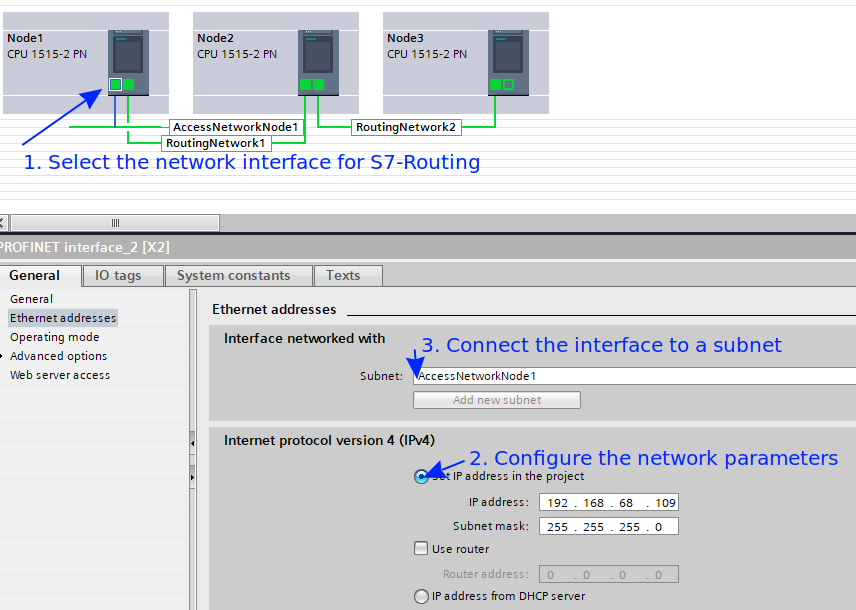
- Hardware configuration must be downloaded to each PLC first before S7-Routing can work. Remember to compile the hardware configuration first before making the download to avoid unnecessary trouble.
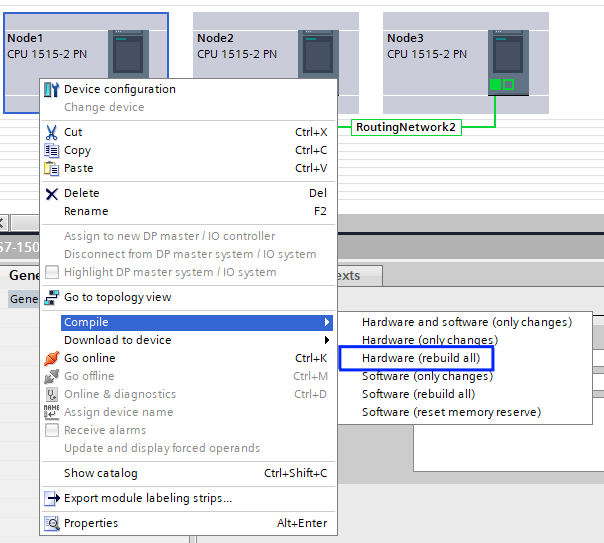
Also, S7-Routing doesn’t require any program or the PLC in run mode so simply downloading the hardware configuration is enough.
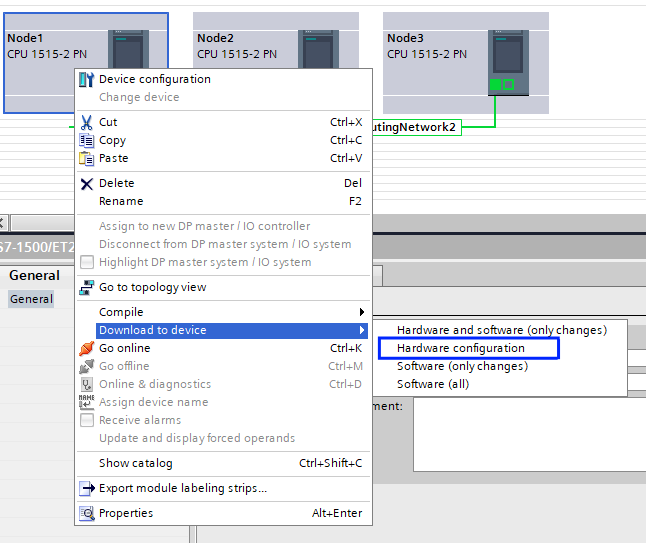
Use S7-Routing
After all the devices have received their hardware configuration, the S7-Routing configuration is finished. To use S7-Routing, simply select the device that you want to access and, instead of selecting the X1 or X2 port, select the subnet that you’re connected to. In the below example, I’m trying to access Node3 PLC’s X2 port but I’m connected to Node1’s X2 and AccessNetworkNode1 subnet. My laptop can’t ping Node3 PLC’s X2 port. But TIA Portal can access Node3 PLC if I tell it to use AccessNetworkNode1 as the subnet and it automatically knows that the gateway is Node1.
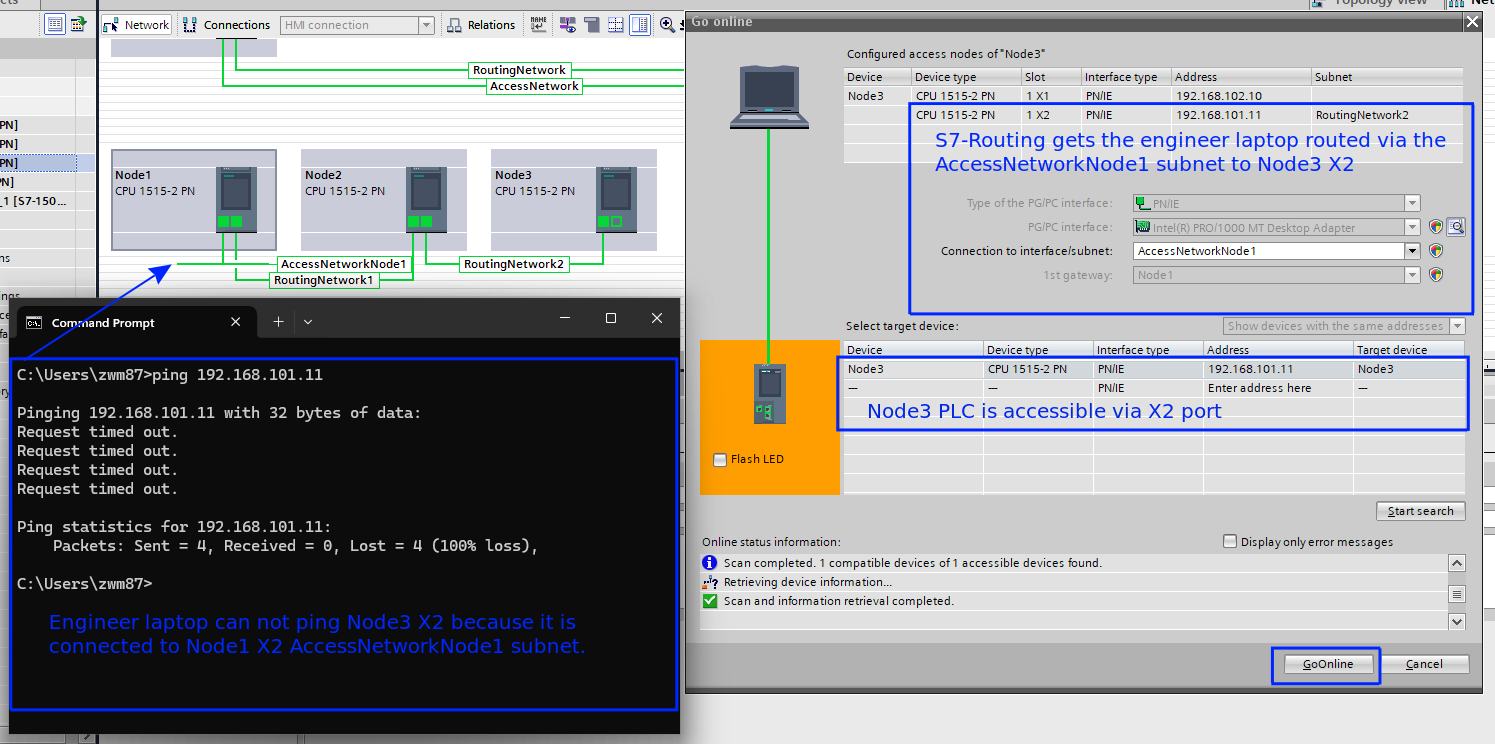
Devices that Can be Accessed via S7-Routing
PLCs are not the only thing that can work with S7-Routing. You can access SINAMICS drives, ET200 IOs, HMIs, etc. via S7-Routing, too. Therefore, if you use SINAMICS drives with PROFINET, you can route through your PLC and configure all the drives. This is particularly useful in the logistics industry when each PLC will control 100 - 150 drives. Additionally, you can also use S7-PCT to access SIEMENS IO-Link masters to configure sensor interfaces without having to access the remote IO. The potential is endless.
If your PLC has more than 1 ethernet port, and you want to access devices connected to a different port to what your laptop is connected to and the devices are not from SIEMENS, it is also possible. Instead of using S7-Routing, you should be using the IP forwarding feature of the S7-1500 PLCs (Most of the S7-1500 PLCs have more than one port and can be connected to different subnets). Check out this article for more information.
Limitations
In my practical experience with S7-Routing, I’m mostly blocked by PN/PN coupler which doesn’t support routing by design.
